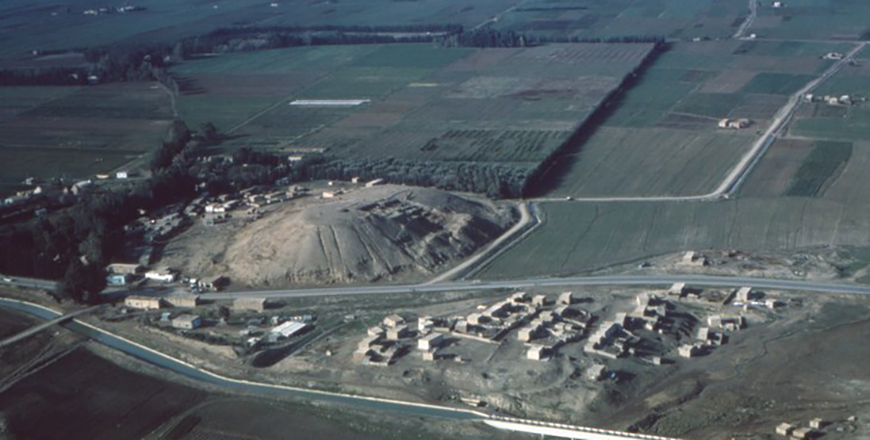AMMAN – Talking on Iron Age settlements in the Jordan Valley, the professor Zeidan Kafafi noted that it has already been published that two geo-morphological features were of big influence on human activities and on settlements in Ghor Abu ‘Obeideh region and these are the Wadi Zarqa system and the widely spread of Ruwayha alluvial fan.
"As regard to the Wadi Zarqa River system, Hourani identified two main alluvial terraces; he added that a third terrace which is older than these two, was found elsewhere to the north of the Ghor Abu ‘Obaideh," Kafafi said.
"Based on the results of the 'Settling the Steppe' project fieldwork, the earliest archaeological remains encountered in the area of Wadi Ghawr, just north of Tell Deir ‘Alla, and runs in the Ruwayha alluvial fans is dated to the Chalcolithic period, the professor underlined.
“The earliest evidence of settlements to be registered in the area extending between Wadi Rageb in the north and the confluence of the Wadi Zarqa with the Jordan River, in the south, has been excavated at Zaqquma (Tell Zaqqoum) which was founded on the Kattar hills and dated back to the Natufian period,” Kafafi underlined.
The professor added that no Pre-Pottery Neolithic sites have been found yet, but, starting with the Late Neolithic period, the region under discussion has been continuously occupied without any interruption.
"Based on a paleo-geographical investigation in this region, it has been published that both the Zarqa and the Jordan beds were interconnected during the early Holocene around 8000 BP. 18 As a result of this separation large flooding plains, with marshlands, have been formed."
"However, the type of the settlements had been changed from one period to another, but the region under discussion was densely occupied during the Iron Age," Kafafi said.
He added that only very a few sites dated to the Middle Bronze Age were registered in the Ghor Abu ‘Obeideh, such as Umm Hammad Gharbi belonging to the Middle Bronze Age I and the Tell Deir ‘Alla dated to the Middle Bronze Ages II and III.
Furthermore, the Ghor Abu ‘Obeideh witnessed during the Late Bronze Age an increase of the number of the settlements, which were spread all over the foothills, on the valley floor and on the Kattar hills. As it will be explained below the site of Tell Deir ‘Alla might be functioned as the key-centre of these.
"The excavated archaeological material at the Late Bronze Age sites proved that the inhabitants during the period ranging from ca. 1,550 to 1,200 BC practiced several occupations such as cultivation, trade, art and crafts," Kafafi elaborated.
"Short and far distances contacts among the Abu ‘Obeideh Late Bronze Age settlements and the neighbourhood sites are well recognised by the archaeological data revealed at those sites," the professor added.
Based on the results of the survey conducted at the Ghor Abu ‘Obeideh it appears that the settlement distribution patterns continued as the same it was during the Late Bronze Age.
Actually, the Iron Age settlements registered in this region were mostly established and concentrated on wadi banks (Rajeb, Ghor, Zarqa), meanwhile, some of which were found built up on top of the open plains (Tell Deir ‘Alla).
Nevertheless, it might be mentioned that the central part of the Ghor Abu ‘Obeideh was less occupied during the Iron Age in comparison with the banks of the wadis.
"Tell Damiyah represents the southernmost Iron Age site located in Ghor Abu ‘Obeideh. It has been established on the active floodplain of the Zor. It also has been remarked that large areas of the entire Jordan Valley were the home for transhumant groups all through ages."
"Actually, and in our point-of-view, this was the case only during the end of the Iron Age, the Persian and Hellenistic periods. This change of economy and settlement patterns may be attributed to the political instability resulted from the Assyrian, New Babylonians, Persians and Greek invasions to the eastern Mediterranean regions," Kafafi underscored.
